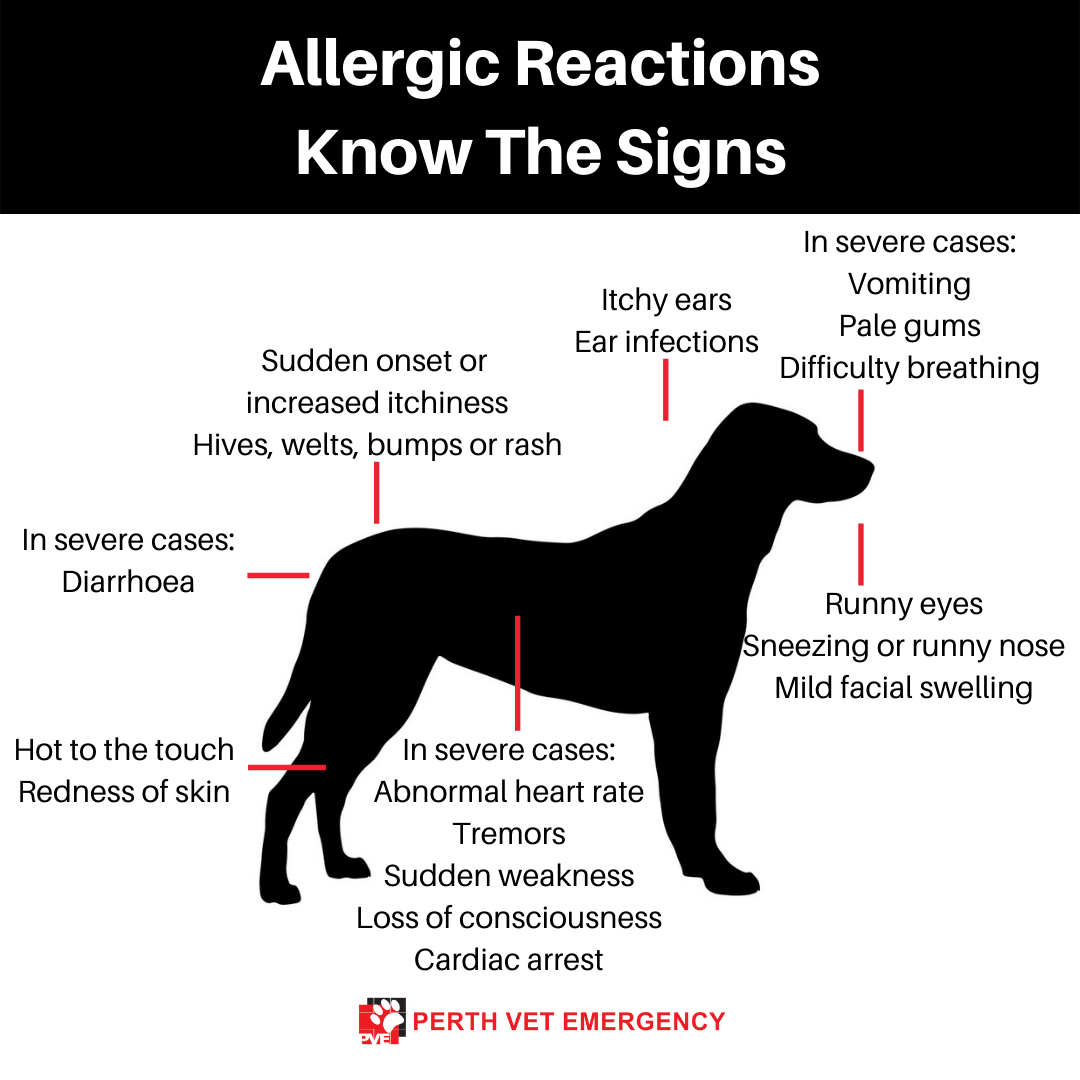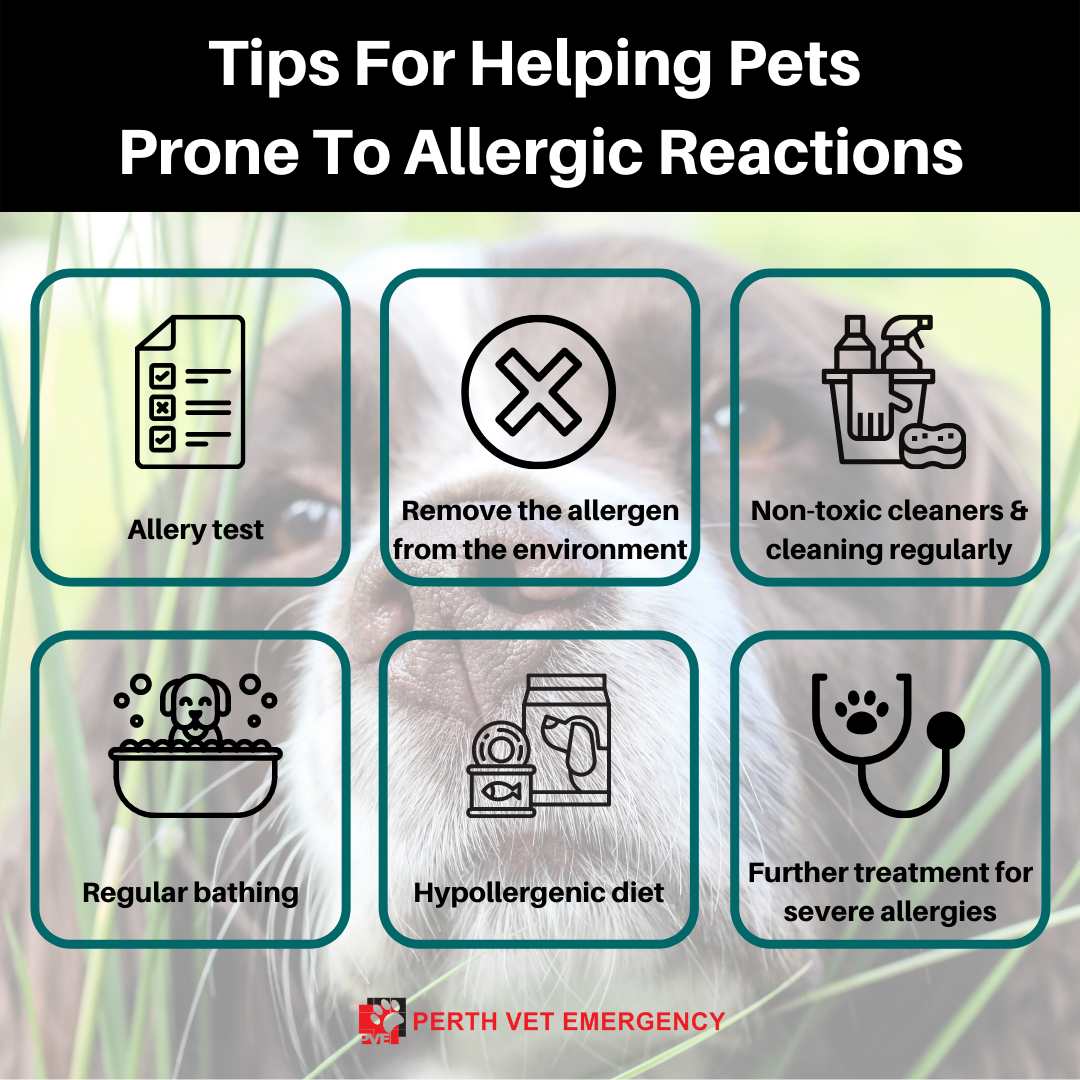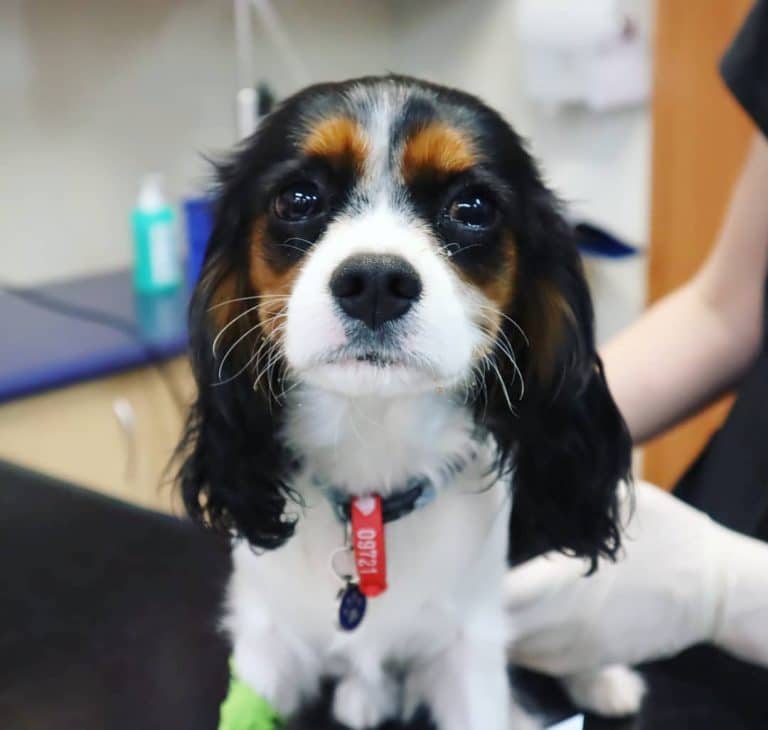Allergic Reaction In Dogs (a guide to signs and treatment)
Does your pet seem to be scratching themselves more than usual? Does their skin look red or swollen? They may be experiencing an allergic reaction. Like us, allergic reaction in dogs is common and is one of the most common cases we see in our hospital.
We’ve put together this guide to help you should your dog ever experience an allergic reaction. It covers common causes of allergic reactions, signs and symptoms, as well as the types of treatment your pet could require.
What you’ll learn
- Can pets have allergic reactions?
- What are allergic reactions?
- What causes allergic reactions?
- Is there a difference between allergic reactions and anaphylaxis
- Signs of an allergic reaction
- What to do if your dog has an allergic reaction
- What does a vet do to treat your dog’s allergic reaction?
- Can dogs be prevented from having an allergic reaction?
Can pets have allergic reactions?
All animals are vulnerable to experiencing allergic reactions. Even though your pet may not have had an allergy before, just like us, they can develop allergies at any stage in their lives. For some pet owners, the management of specific allergies in their pets will be something that forms part of their day-to-day lives (most allergies appear at around six months of age). But some pets can have a spontaneous allergic reaction to something in their environment (known as an allergen).
Allergens are everywhere. So, to mitigate your pet’s risk of suffering a sudden and uncomfortable allergic reaction, it’s good to know the common causes.
In most instances, a pet’s first allergic reaction will be mild, but in some cases, the initial reaction can be severe. Therefore, it’s important to know that each subsequent reaction tends to be progressively worse.
What are allergic reactions?
Allergies are simply immune system reactions. Allergic reactions develop when the body is exposed to a substance (allergen) the immune system perceives as a threat to the body. In many cases, the immune system has overreacted by seeing the allergen as a threat, when in fact it’s fairly harmless.
When this happens, the immune system releases special cells that produce inflammatory mediators and antibodies to combat the perceived threat. These inflammatory mediators cause the symptoms of puffy eyes, itching, reddened and swollen skin we may see in our pets.
In order for an allergic reaction to develop, the body has to be exposed to the allergen through inhalation, ingestion, injection, or skin contact.
What causes allergic reactions?
Like us, our pets can have an allergic reaction to just about anything. The most common allergies include:
Environmental allergies: Caused by an allergen being inhaled, ingested, or absorbed through the skin. These include dust, pollens, grass, and mould.
- Insect bites: One of the most common insect bites causing allergic reactions in dogs we see are bee stings.
- Chemicals: Household cleaners and even air fresheners can be a source of allergens for pets.
- Medications: Although rare, some dogs can be allergic to certain antibiotics, tick and flea prevention products, and vaccinations.
- Food allergies: While an uncommon allergy in pets, food allergies are caused by specific ingredients in food. Usually, proteins or carbohydrates are the sources of the allergy.
- Flea allergy dermatitis (FAD): When fleas bite, their saliva is injected into your pet’s skin which can cause skin irritation.
Unless your pet has a known allergy, most of the time the cause of your pet’s allergic reaction will be unknown. Allergic reactions can occur immediately or up to 48 hours after contact with the allergen. In either case, immediate veterinary attention should be sought.
Is there a difference between allergic reactions and anaphylaxis?
Allergic reactions can range anywhere from very mild to life-threatening. Severe cases of allergic reaction are known as anaphylaxis.
Some allergic reactions are only mild to moderate. An example would be your dog developing itchy, swollen skin, hives, or swollen eyes.
Anaphylaxis, the most severe form of an allergic reaction, can be life-threatening. It occurs when the immune system triggers the whole body to react to an allergen and goes into shock. Symptoms of anaphylaxis will occur within minutes. Signs include collapse, vomiting, pale gums, and loss of consciousness. While anaphylaxis is rare, should your dog ever experience this type of allergic reaction see your vet immediately.
Signs of an allergic reaction
There are a number of signs your dog may exhibit should they have an allergic reaction. Signs will also increase in severity depending on the type of reaction they are experiencing.
Signs of mild allergic reaction in dogs include:
Sudden onset or increased itchiness, including scratching, licking, chewing or shaking of ears
- Itchy or non-itchy hives, welts, bumps, or rash
- Generalised redness of the skin
- Runny eyes
- Sneezing or runny nose
- Itchy ears and ear infections
- Mild facial swelling (particular around the eyes, muzzle or near the ears
- Feeling hot to the touch
Signs of severe allergic reactions include:
- Vomiting
- Diarrhoea
- Pale gums
- Severe facial swelling
- Noisy or difficulty breathing (especially if inside mouth or throat is swollen or inflamed)
- Abnormal heart rate
- Sudden weakness and collapse
- Tremors
- Loss of consciousness
- Cardiac arrest
What to do if your dog has an allergic reaction
Contact your vet straight away should your dog show any signs of an allergic reaction or you suspect they are. We don’t recommend waiting to see if their symptoms improve. Instead, treat it like a medical emergency. Even mild allergies like hives and itchiness can progress to full anaphylaxis, especially with repeated exposure to allergens.
Human medications like antihistamines should never be given to pets without the guidance of a veterinarian. As medication doses are different for pets and side effects can be unpredictable.
What does a vet do to treat your dog’s allergic reaction?
When you arrive at your local vet or closest animal emergency hospital, your vet will examine your pet in order to develop a treatment plan. Your pet’s treatment will depend on the severity of their allergic reaction. For pets with mild allergic reactions, treatment can include:
- Administering of an antihistamine
- Anti-inflammatories
- Pain relief if necessary, particularly for patients with bee stings or other painful insect bites
For pets experiencing more severe allergic reactions, treatment can involve:
- Intravenous fluid therapy to treat shock, improve blood flow to organs
- Administering of antihistamines and anti-inflammatories
- Adrenaline to quickly constrict blood vessels, relax muscles in the lungs to improve breathing, stimulate the heartbeat, and reduce swelling
- Medications to stop vomiting
- Medications to improve blood pressure
- Blood tests to assess the severity of your pet’s condition and to assess how they are responding to treatment
- Oxygen therapy if they are having difficulty breathing
- Depending on the severity of your pet’s condition, it may be recommended they are monitored in hospital until safe for them to go home
After treatment, there is a possibility of repeat episodes of allergic reactions for 12 to 24 hours after the initial reaction has subsided.
Can dogs be prevented from having an allergic reaction?
We’ve gathered our top tips for helping pets prone to allergic reactions:
If your dog has persistent allergies your vet or a veterinary dermatologist can perform an intra-dermal allergy test or blood tests to identify the allergens they are reacting to.
- Remove the allergen from their environment.
- For environmental allergies, keep the areas your pet spends most of their time inside free from allergens. Regular cleaning and vacuuming the floor and their bedding using non-toxic cleaning agents will help.
- Regular bathing may help relieve itchiness and remove allergens on their coat and skin. It is best to discuss with your vet which pet shampoo is best as too frequent bathing with a harsh shampoo can cause their skin to dry out.
- For food allergies, your vet can recommend a prescription hypoallergenic diet.
If your dog has severe allergies your vet may recommend treatment to help prevent and manage symptoms. Some of these treatments include:
- Anti-inflammatory therapy: This treatment is often used for dogs with nearly impossible to avoid environmental allergies. Drugs like antihistamines are prescribed to help reduce the severity of the allergic reaction.
- Shampoo therapy: Your vet can prescribe a medicated shampoo to help treat secondary sores and infections caused by allergic reactions.
- Desensitisation therapy or allergy injections: After undergoing allergy testing, based on the results a series of injections can be developed to help desensitise your dog’s immune system.
For further advice on preventative methods for your pet, speak with your local vet.
If you believe your pet is suffering from an allergic reaction, visit Perth Vet Emergency or your local veterinarian immediately.

 Environmental allergies: Caused by an allergen being inhaled, ingested, or absorbed through the skin. These include dust, pollens, grass, and mould.
Environmental allergies: Caused by an allergen being inhaled, ingested, or absorbed through the skin. These include dust, pollens, grass, and mould. Sudden onset or increased itchiness, including scratching, licking, chewing or shaking of ears
Sudden onset or increased itchiness, including scratching, licking, chewing or shaking of ears If your dog has persistent allergies your vet or a veterinary dermatologist can perform an intra-dermal allergy test or blood tests to identify the allergens they are reacting to.
If your dog has persistent allergies your vet or a veterinary dermatologist can perform an intra-dermal allergy test or blood tests to identify the allergens they are reacting to.

